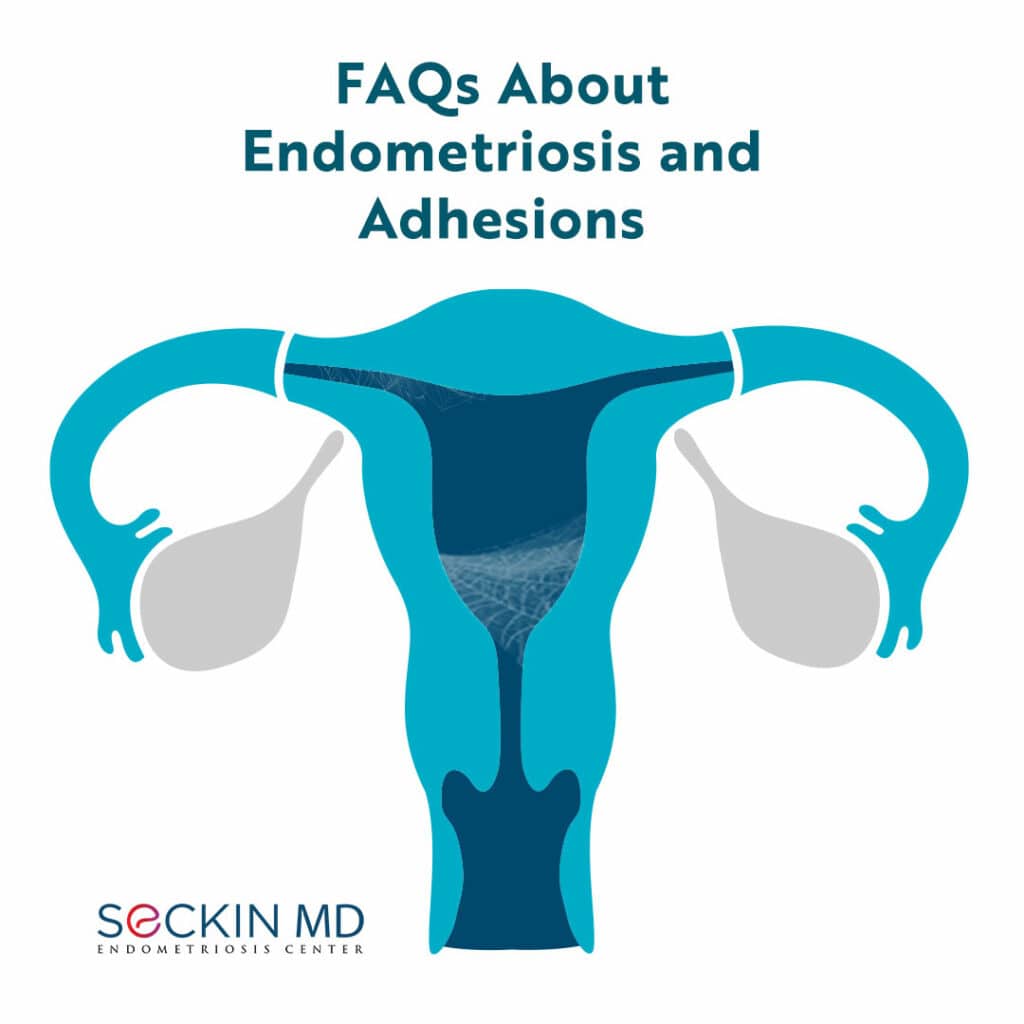FAQs About Endometriosis and Adhesions

Endometriosis is often accompanied by adhesions that can cause organs to stick together. Here are some FAQs about endometriosis and adhesions and why it is important to treat them.
What are adhesions?
Adhesions are fibrous, band-like scar tissue structures formed between two organs. They can occur when endometrial lesions bleed and cause an inflammatory reaction. Those caused by endometriosis can be thin, filmy, and transparent, or thick, dense, and opaque.
Where do adhesions usually form?
Adhesions may form within uterine muscular or serosa layers, ovaries, fallopian tubes, pelvic sidewalls, the peritoneum, small intestines, bowel, rectum, recto-vaginal septum, and anterior and posterior cul-de-sac. Rarely, they can also form in the vagina, lungs, cervix, nerves, and even brain.
How do adhesions cause pain?
Adhesions can fill spaces between organs with scar tissue and make them stick together. This leads to inflammation and pain.
Can adhesions form without endometriosis?
Yes. Various factors can trigger the formation of adhesions. These include abdominal surgery, peritoneal trauma, foreign bodies in the abdomen, infections, laparoscopy, laparotomy, and poor nutrition.
How do adhesions caused by endometriosis differ from other types?
Adhesions caused by endometriosis can lead to anatomical changes, making it difficult to properly delineate organs from the sticky scar tissue. These also contain glands and endometrial tissue that respond to changing estrogen levels during the menstrual cycle and can progress together with endometriosis.
What symptoms do adhesions cause?
Symptoms of adhesions can vary depending on their location and severity. Common symptoms include pain during breathing, constipation, bloating, pain during and after bowel movements, pain during menstruation, and pain during intercourse.
Is the pain due to adhesions and endometriosis the same?
No. Although adhesions can form due to endometriosis, the pain they cause may not be the same as the one caused by endometriosis. Endometriosis pain can be the result of inflammatory reactions within the lesion while in the case of adhesions, scar tissue binding organs together is the cause of the pain.
How do doctors diagnose adhesions?
Adhesions can be diagnosed by laparoscopic deep excision surgery followed by a histological examination.
It is important to ascertain what has caused the adhesion in order to plan a further course of treatment.
How do doctors treat adhesions?
If adhesions severely affect your quality of life, they have to be surgically removed either by laparoscopy or laparotomy, the latter being more invasive and difficult to recover from.
How is Seckin Endometriosis Center’s surgical approach different from others?
Surgery itself can sometimes cause adhesions. However, at Seckin Endometriosis Center, we avoid this by opting for minimally invasive techniques such as laparoscopic surgery, during which we first remove suspected adhesions.
Our patented Aqua Blue Contrast (ABC)TM technique allows us to clearly mark and fully remove endometriosis lesions and their associated adhesions.
Do you have any more questions about endometriosis and adhesions? Please do not hesitate to ask by leaving a comment on our post on Facebook or Instagram
Get a Second Opinion
Our endometriosis specialists are dedicated to providing patients with expert care. Whether you have been diagnosed or are looking to find a doctor, they are ready to help.Our office is located on 872 Fifth Avenue New York, NY 10065.
You may call us at (646) 960-3080 or have your case reviewed by clicking here.